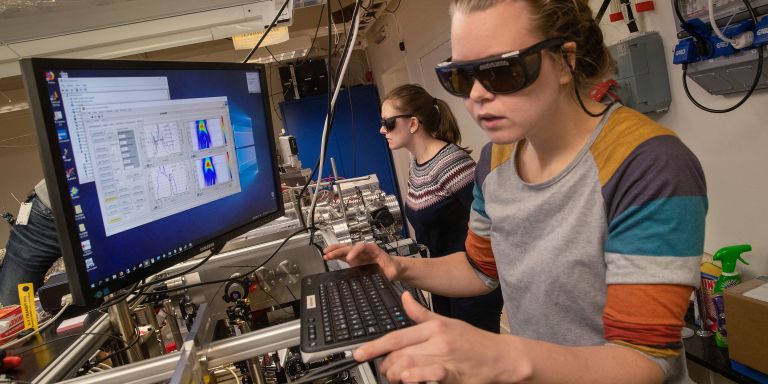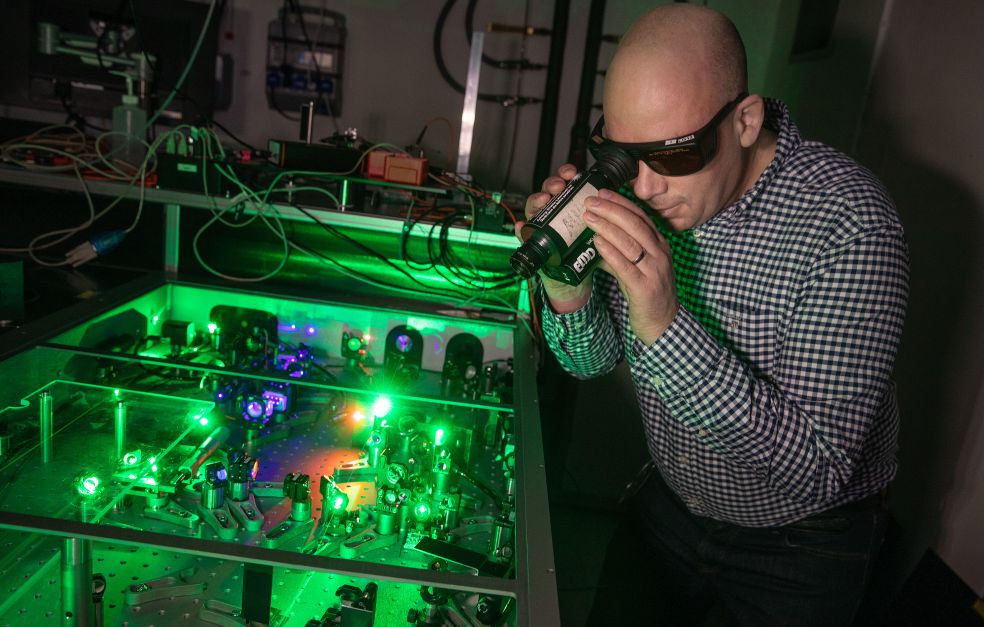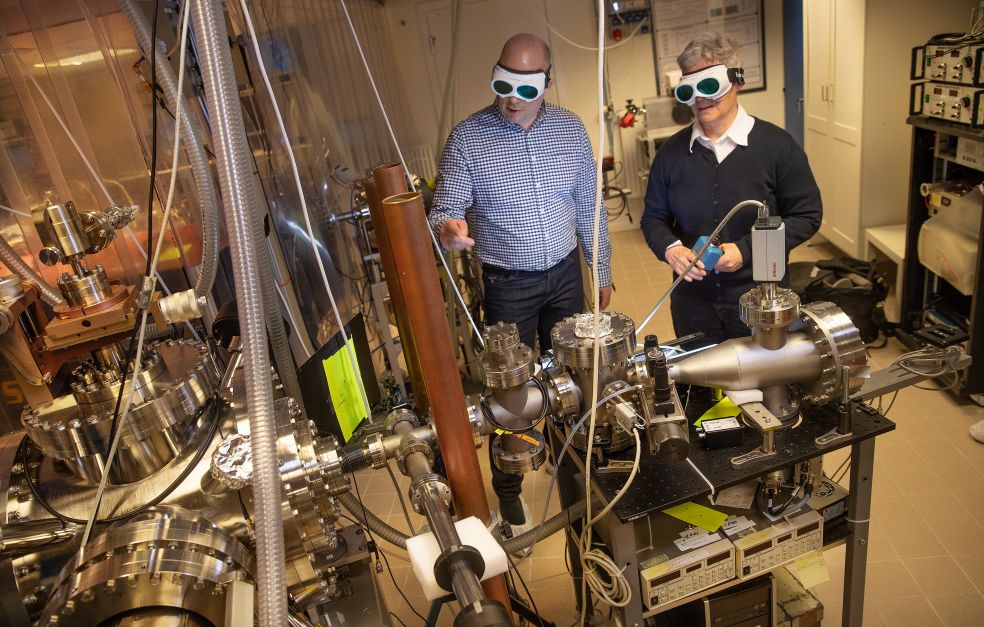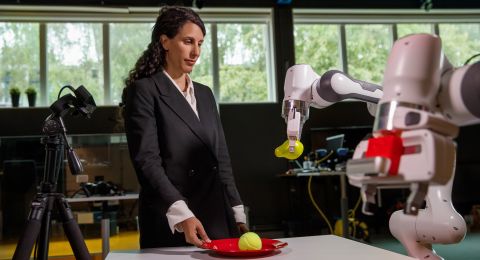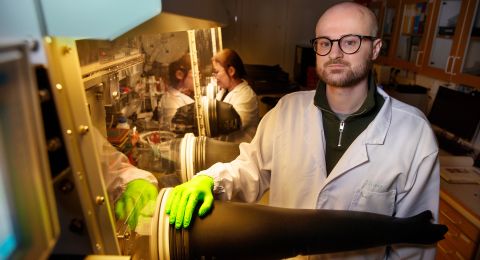
Project Grant 2017
Attosecond chronoscopy of electron wave-packets probing entanglement and time-ordering of quantum processes
Principal investigator:
Raimund Feifel, Professor of physics
Co-investigators:
University of Gothenburg
Vitali Zhanuerchyk
Stockholm University
Eva Lindroth
Lund University
Marcus Dahlström
Mathieu Gisselbrecht
Anne L’Huillier
Institution:
University of Gothenburg
Grant in SEK:
SEK 36.3 million over five years
An atom or molecule can release electrons if it is exposed to radiation of a sufficiently short wavelength. This is called the photoelectric effect. Albert Einstein’s theoretical explanation of the effect awarded him the Nobel Prize in Physics in 1921. A single photon – a “particle of light” – imparts all its energy to what is called a quantum system, which can be for instance an atom. In the process, an electron is detached. The effect is central to many chemical processes, and is also used in solar cells, and other applications.
Funded by Knut and Alice Wallenberg Foundation, researchers from the Universities of Gothenburg, Lund and Stockholm plan to develop methods of studying the process in real time. One key goal is to see exactly how radiation causes more than one electron to detach, how they affect each other and whether the order in which they detach can be discerned. It has never before been possible to study this in detail.
“The electrons orbiting the nucleus of an atom are not mutually independent. They are sensitive to each other. If things are stirred up, and one or more are removed, they affect each other. To gain a proper idea of what happens, it is essential to detect the properties of all electrons that are released,” explains Raimund Feifel.
He is a professor of physics at the University of Gothenburg, and a specialist in the challenging “correlation methods” that are necessary for such measurements. Raimund Feifel is the leader of the project. The quantum phenomenon he describes is usually known as “entanglement” of particles. This means that one particle has a kind of connection to another, or information about another, even though they are in different places, and do not affect each other with electrical forces, for instance.
Ultra-short laser pulses reveal photoemission
The project brings together experts on theories explaining the phenomenon with researchers whose main field of expertise lies in practical experimentation. The particles that will be studied are negatively charged ions, also called anions, which are well suited to experiments over ultra-short time spans. The University of Gothenburg has extensive experience of producing and manipulating anions. Much of the theoretical work including simulations will be done in Stockholm and in Lund, where the latter also has the necessary laser expertise and equipment to conduct the experiments. Using ultra-short laser pulses and modern spectroscopic techniques, it is possible to study processes that take only a few attoseconds – an almost inconceivably small unit of time. An attosecond is 10-18 seconds, i.e. a billionth of a billionth of a second. That is as small a fraction of a second as a whole second is of the age of the universe.
“The ultra-short laser pulses that we create – attosecond pulses – are generated by interaction between atoms and a strong laser field, creating higher-frequency radiation. The pulses work rather like a stroboscope, and enable us to study photoemission in real time. This is hugely exciting, because it’s hard to predict what we’re going to see,” says Anne L’Huillier, Professor of Atomic Physics, who is in charge of the experiments at Lund.
New insights from the true picture
Until recently, researchers have considered that photoemission of multiple electrons means that electrons are released simultaneously. But in reality it is merely that the time differences between release of the individual electrons have been so small that it has not been possible to study them.
“It’s been accepted that it is an instantaneous process. That view was good enough to fit the theory. But when we can break the process down into several stages in terms of both energy and time, we can study an extremely interesting interaction, allowing us to gain new insights into the quantum mechanical problems,” explains Eva Lindroth, Professor of Theoretical Atomic Physics.
The project combines traditional research methods with modern ones, and theory with experiments, to achieve the goal: a clearer idea of precisely what happens when electrons leave a quantum system by photoemission, and how the electron itself “reacts”.
“Basically, it’s a question of the role and importance of time in the context of quantum mechanics,” says Feifel.
The technically challenging experiments will enable the researchers to develop new techniques, and further develop existing laser equipment, which may be of practical importance for other research teams, and in industry. But the project itself is entirely confined to basic research – a true close-up study of electron dynamics.
Lindroth elaborates:
“A common feature of chemical reactions is that certain electrons move immediately before the chemical reaction itself takes place, which happens when the atomic nuclei change position. Ultimately, it would be fantastic if we could influence this dynamic. This would enable us to control the outcome of chemical reactions.”
Text Lisa Kirsebom
Translation Maxwell Arding
Photo Magnus Bergström
